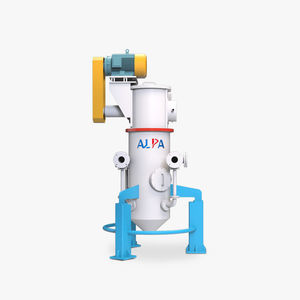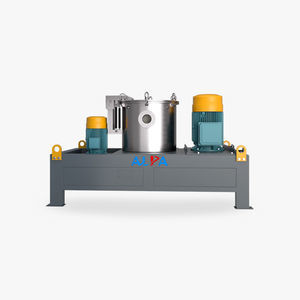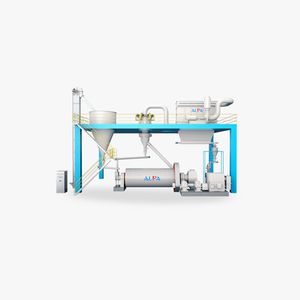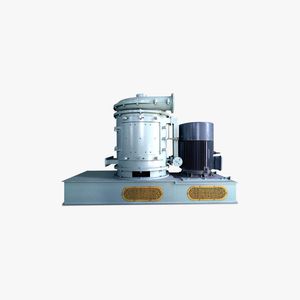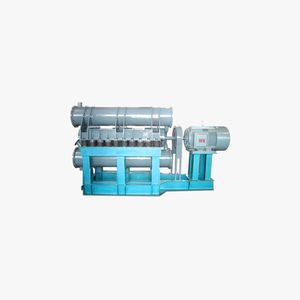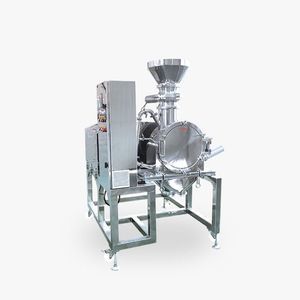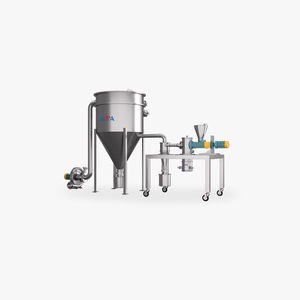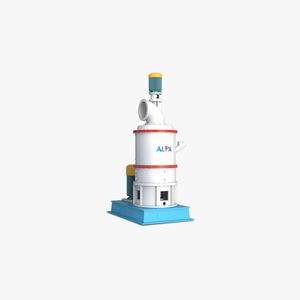
- Production Machines
- Other Manufacturing Equipment
- Steam jet mill
- Shandong ALPA Powder Technology Co., Ltd.
- Company
- Products
- Catalogs
- News & Trends
- Exhibitions
Steam jet mill S-MQW seriesverticalfor lithium batteryfood


Add to favorites
Compare this product
Characteristics
- Technology
- steam jet
- Orientation
- vertical
- Product applications
- for lithium battery, food, chip, for rubber, mica, graphite, silica, potassium manganate, quartz, silicon, talc, kaolin, sulfur
- Other characteristics
- laboratory
- Sector
- for the pharmaceutical industry, for recycling, for the plastics industry, for the chemical industry
- Final grain size
Max.: 16 µm
Min.: 2 µm
- Output
Max.: 10,000 kg/h
(22,046 lb/h)Min.: 400 kg/h
(882 lb/h)
Description
Using superheated steam as gas source, high energy utilization rate.
• High energy utilization rate, low operating cost, grinding particle size range D50: 0.5-10μm.
• The revolution of dry milling technology, the milled particle size can reach sub-micron or nanometer level, which greatly improves the energy utilization efficiency and realizes low carbon, energy saving, environmental protection and resource recycling by supersonic steam jet mill.
• Applicable materials: bulk solid wastes such as steel slag, slag, and fly ash; non-metallic minerals such as calcium carbonate, talc, quartz; new materials such as lithium carbonate, lithium iron phosphate, and white carbon black.
Upgraded from a conventional jet mill, adopts unique high-temperature mechanical sealing technology and cooling technology, and uses high-temperature steam as the kinetic energy medium for milling. Through the specially designed Laval nozzle, the material is milled at high speed. The crushed materials enter the forced eddy current classification, the qualified materials enter the heat preservation collection system for collection, and the coarse materials fall into the crushing zone to continue crushing. The whole process is completed under the dry method.
Catalogs
Other Shandong ALPA Powder Technology Co., Ltd. products
Dry Grinding
Related Searches
- Grinding mill
- Horizontal grinding mill
- Vertical grinding mill
- Food lump breaker
- Rotor lump breaker
- Impact grinding mill
- Roller grinding mill
- Waste lump breaker
- Plastic pulverizer
- Mill for the pharmaceutical industry
- Mineral mill
- Hammer grinding mill
- Laboratory grinding mill
- Compact grinding mill
- Recycling grinding mill
- Grinding mill for the food industry
- Stainless steel grinding mill
- Powder grinding mill
- Rotary drum grinding mill
- Dry milling grinding mill
*Prices are pre-tax. They exclude delivery charges and customs duties and do not include additional charges for installation or activation options. Prices are indicative only and may vary by country, with changes to the cost of raw materials and exchange rates.



